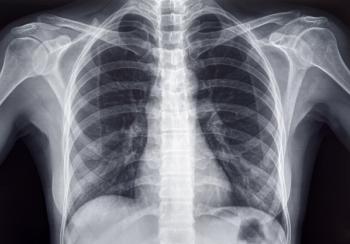
Incidental Lung Nodule Detection May Help Save Lives, Study Finds
The study authors say their findings argue for careful reading of CT scans done for other reasons that may reveal the presence of lung nodules.
Imagine you're getting a chest scan for a potential heart problem, and instead of a heart issue, it reveals a small spot on your lungs. A recent study published in the
Lung cancer remains the leading cause of cancer-related deaths in the United States, with most cases diagnosed at later, less treatable stages. Although low-dose computed tomography (CT) screening has proven effective in reducing mortality by detecting early-stage lung cancer, fewer than 5% of eligible individuals currently participate in screening programs. As a result, researchers are now examining alternative ways to detect lung cancer early, including through incidental findings during imaging done for other health concerns.
A team of researchers, including
The researchers analyzed data from over 1,000 patients diagnosed with NSCLC using the Surveillance, Epidemiology, and End Results (SEER)-Medicare database. They focused on chest imaging performed up to a year before cancer diagnosis for reasons unrelated to cancer screening, such as evaluating heart issues.
At the time of diagnosis, the median tumor size was 25 millimeters (mm). The predicted tumor sizes at the time of prior imaging were 12.16 mm for fast-growing tumors, 17.3 mm for medium-growing tumors, and 20.42 mm for slow-growing tumors.
The study found that if the nodules had been detected earlier, it could have lowered the risk of death by 7.79% for fast-growing tumors, 4.5% for medium-growing tumors, and 2.45% for slow-growing tumors.
"Our findings support the concept that CT scans performed for other clinical reasons, for example, a heart condition or other issues, should be read in their entirety and interpreted carefully because they may reveal the presence of lung nodules that may need clinical attention," Taioli, the study’s corresponding author, told MHE in an interview. "This is particularly true for [patients] who do not meet the eligibility criteria for lung cancer screening.”
The study also revealed that approximately 10.5% of patients diagnosed with NSCLC had undergone chest imaging for reasons other than cancer screening in the year prior to their diagnosis. The study’s findings suggest that identifying tumors earlier, when they are smaller (less than 10 mm), could significantly improve survival rates. For fast-growing tumors, early detection could have decreased mortality by up to 8%.
However, the study had some limitations.The authors were unable to account for various factors, such as tumor density, which could affect tumor growth rates. Additionally, the study only included NSCLC patients, and it’s expected that patients with more aggressive cancer types, such as small cell lung cancer (SCLC), could benefit even more from incidental detection. The study also had to rely on estimated tumor size due to limitations in the SEER database, which only reports tumor diameter.
Despite these limitations, the findings support the need for greater attention to chest imaging done for non-cancer reasons. In the discussion section of their paper, the researchers highlighted the importance of implementing programs to address incidental pulmonary nodules. Machine learning and artificial intelligence-driven tools, already approved for use in detecting lung nodules, could also play a significant role in identifying tumors early.
In many cases, “the incidental finding of a nodule in a CT scan performed for other reasons may be the only opportunity for early detection of lung cancer nodules,” Taoli said. “Early detection of lung cancer has revolutionized lung cancer prognosis, from a deadly disease to a highly curable one."
Newsletter
Get the latest industry news, event updates, and more from Managed healthcare Executive.


















































